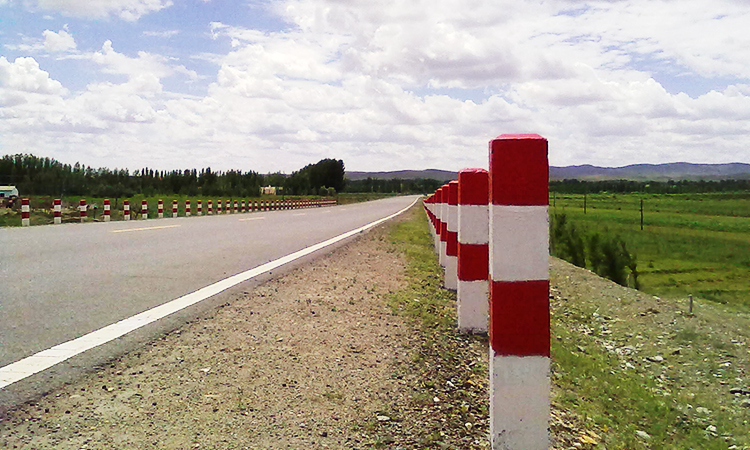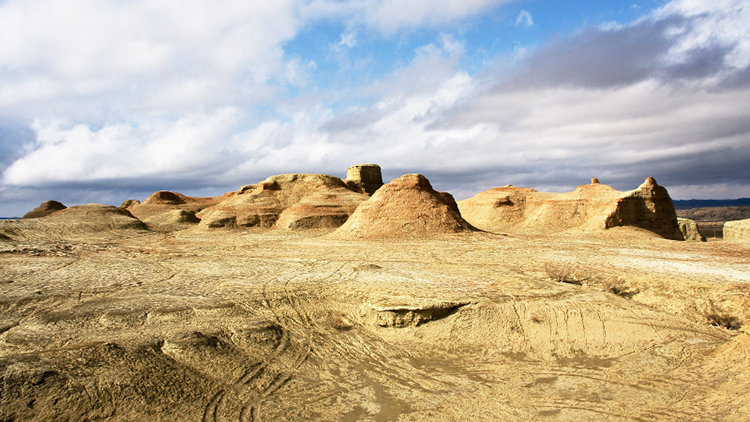Written by: Xinjiang Daily, translated by Sun Mengmeng
Posted on: November 13, 2015 | 
Wind farm in Xinjiang
To develop its energy industry, Xinjiang has set a clear guideline – “Three bases and one corridor”, referring to a large production and storage base for gas and oil, coal power and coal chemical industry bases, wind electricity base, as well as a national energy resources corridor.

“It is very important for China’s national energy security to build such a corridor and make it unimpeded”, an official said. On the west end and the north part of the energy corridor lie the most petroliferous areas, such as Kazakhstan – the world’s 11th biggest reserve for oil and natural gas, Turkmenistan – the world’s 4th biggest reserve for natural gas, as well as some other oil-rich countries like Iran, Azerbaijan and Russia.
China has consistently worked with the countries on the west-end of the corridor. Taking the second line of the West-East Natural Gas Transformation (the longest gas pipeline in the world) as an example, Turkmenistan transmits its natural gas to Central and South China and the Pearl River Delta, forming a gas network that covers 40,000 square kilometers. This has increased by 1-2% of China’s natural gas consumption.

Construction of the Silk Road Economic Belt will speed up cooperation in the field of energy. The government of Xinjiang Autonomous Region and the Xinjiang Production and Construction Corps (Xinjiang PCC) are working on bringing in oil and gas resources across borders. In May, Xinjiang PCC held an overseas business meeting in Hong Kong, and proposed more than 80 projects for cooperation, many of which are related to overseas energy development.
For Xinjiang, “bringing in” is the first step of developing an energy resources corridor. The more important step is “going out”, which means Xinjiang must enhance the added value of the energy resources rather than send them into the market as crude resources.

Coal in Xinjiang is the kind of resource that needs to improve its added value. The direction of Xinjiang coal resources development has been decided by setting up large-scale coal power and the coal chemical industry base.
Recently, China’s National Energy Administration and the National Development and Reform Commission have continued to give support to developments in the processing and transformation of local coal resources in Xinjiang. On July 7, 2014, the National Energy Administration approved the preliminary work of the South Alando Colliery and the South Opencast Colliery at East Junggar Basin. The South Opencast Colliery supports the ±1100kV extra-high voltage direct current transmission from East Junggar to East China.
After energy conversion, Xinjiang must turn to the problem of power transmission. Recently, six 750 kV EHV transmission and transformation projects were brought into national planning, including the North Junggar – Wucaiwan project, Wujiaqu – North Urumqi project, Turpan – Hami project, Wucaiwan – Jijihu – Santanghu project, and two transformation station extension projects in Wusu and Yandun. Experts believe these projects will play important roles in determining energy supplies of Xinjiang.
In May, a conference focused on promoting Xinjiang’s development was held. Zhang Yi, director of the State-owned Assets Supervision and Administration Commission, said that the state-owned enterprises of the central government and the governments of other provinces (cities) should cooperate with Xinjiang’s companies actively and encourage local engagement during the process of resource development and utilization, so as to promote the development of correlated industries in Xinjiang. Xinjiang is also expecting a much more powerful reform in energy resources.
You may also like: